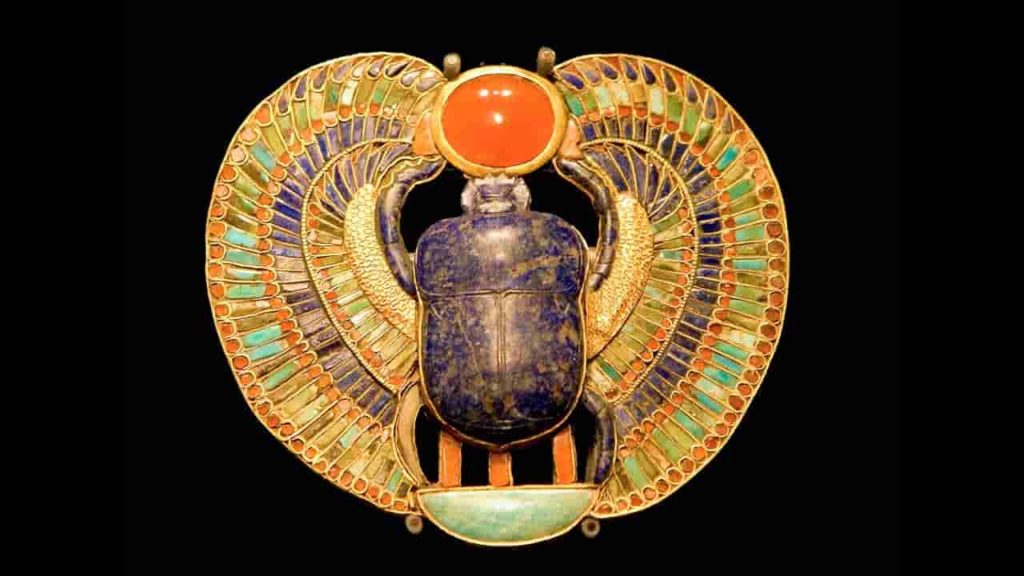Just over 98 years ago, the British Egyptologist Howard Carter was responsible for discovering one of the greatest archaeological finds of the last century: the tomb of Pharaoh Tutankhamun in Egypt’s Valley of the Kings.
This marked the beginning of an exploration that continues to intrigue researchers to this day. Within the grand resting place that safeguarded King Tut, numerous artifacts were unearthed, showcasing both the opulence of his reign and the ritualistic practices of that historical era.
With that in mind, let’s delve into 5 intriguing artifacts discovered in Tutankhamun’s tomb. Check them out!
1- Gold Sandals and Toe Protectors
Tutankhamun was buried with items presumed to have been used during his lifetime and intended for his use in the afterlife, according to beliefs of the time.
Among the treasures in the tomb of the boy pharaoh were sandals crafted from solid gold. These served a funerary purpose but likely adorned Tutankhamun’s feet while he was alive.
Moreover, special toe caps, also made of gold, were placed on the king’s toes. These caps were designed to maintain the shape of Tutankhamun’s limbs even after an extended period, ensuring preservation ‘for eternity.’
2- Games
Considering the belief in an afterlife for the pharaoh, it was fitting to entomb him with essential items.
Researchers uncovered various objects such as food, clothing, and weapons that the pharaoh might require, but they also included items for leisure.
Numerous games were found near the sarcophagus, with one particular game being quite popular during that era—Senet.
Senet is an ancient board game originating in Egypt and stands as one of the oldest known board games. Tutankhamun’s tomb contained four Senet sets, ensuring the pharaoh’s eternal entertainment.
3- Boomerang
According to Tarek El Awady, curator of the exhibition “Tutankhamun: Treasures of the Golden Pharaoh,” numerous boomerangs were discovered inside Tut’s tomb. These included both returning boomerangs and those that did not come back to their original starting point when thrown.
While it might seem unusual to find this object there, the expert explains, “They were used at least since the Ancient Kingdom, many hundreds of years before Tutankhamun.”
The most well-known depiction of their use was launching a boomerang from a boat in the swamps of the Delta to catch birds.
4- Musical Instrument
Indeed, the final resting place of Pharaoh Tutankhamun contained everything, including a portable musical instrument named the Sistrum.
It is assumed that this instrument was played during Tut’s burial ritual, possibly by Ankhesenamun, one of his wives, as the Sistrum was primarily played by women.
El Awady clarifies that the Sistrum held greater significance than just its musical value, being considered the favored instrument of Hathor, one of the most revered deities in Ancient Egypt. The researcher states, “It was believed that the strident sound it produced brought the body to life.”
5- Jewels
Wealth also accompanied King Tut in his journey to the afterlife. Researchers have identified numerous gems, some of which have garnered attention for their depictions of deities.
One such piece, recognized as a breastplate (a large necklace), featured a falcon symbolizing the god Horus, one of the chief protectors of Egyptian kings.
However, perhaps the most impressive jewel was crafted from lapis lazuli and represented a scarab, considered sacred in Ancient Egypt.
The beetle or scarab symbolizes the Egyptian god Khepri, associated with rebirth. As evident, everything was meticulously designed to assist Tut on his journey to the afterlife.
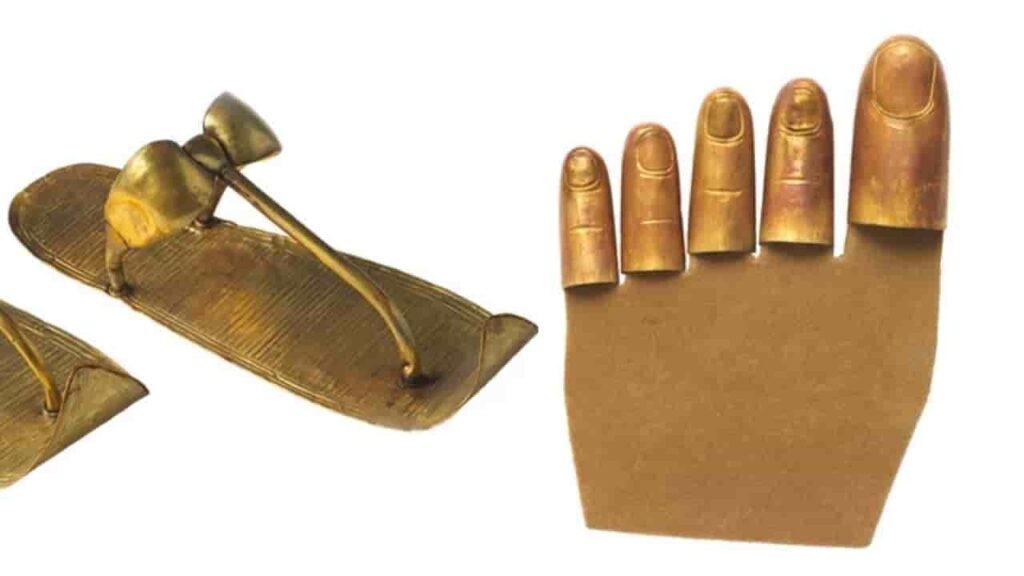
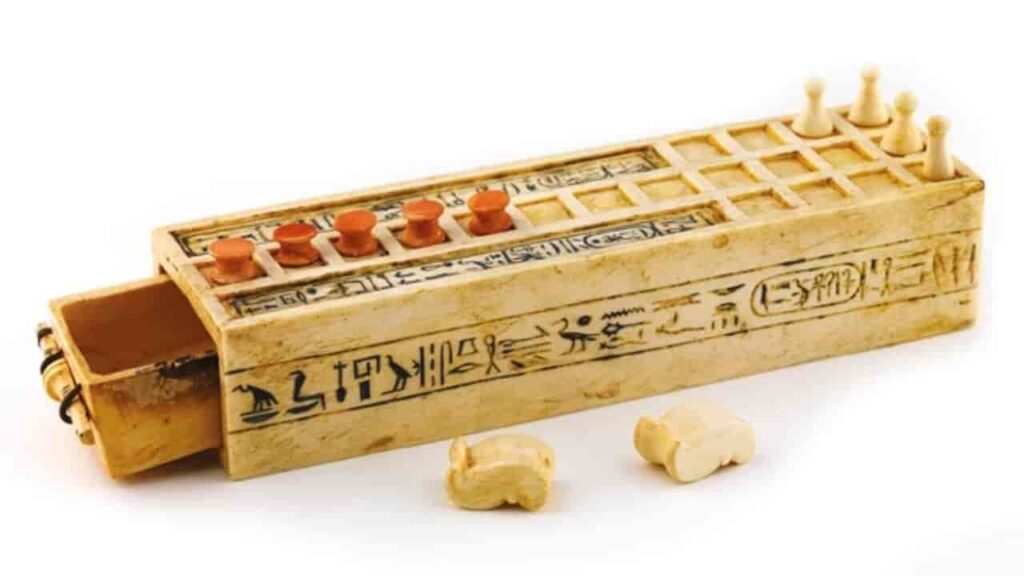
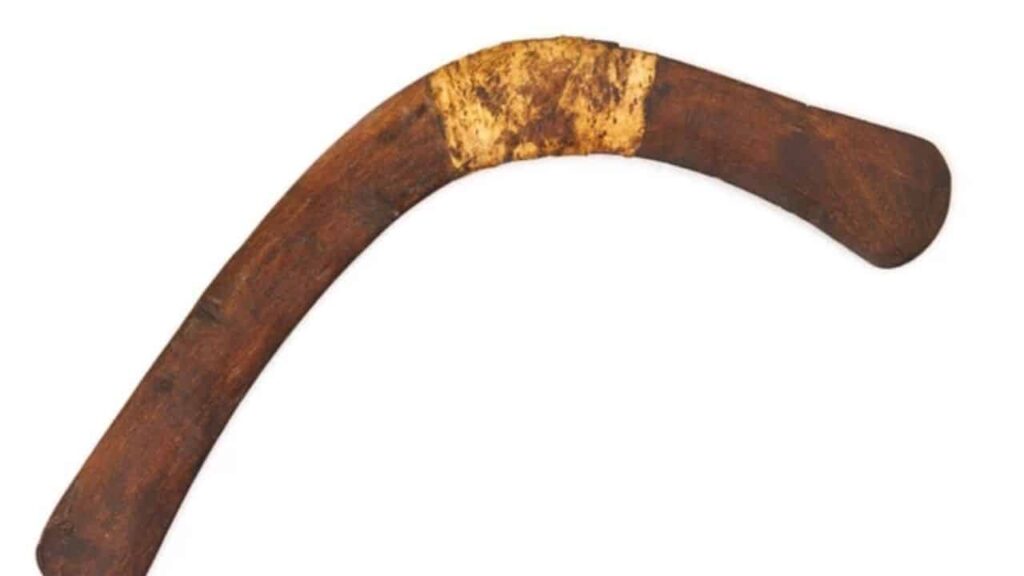
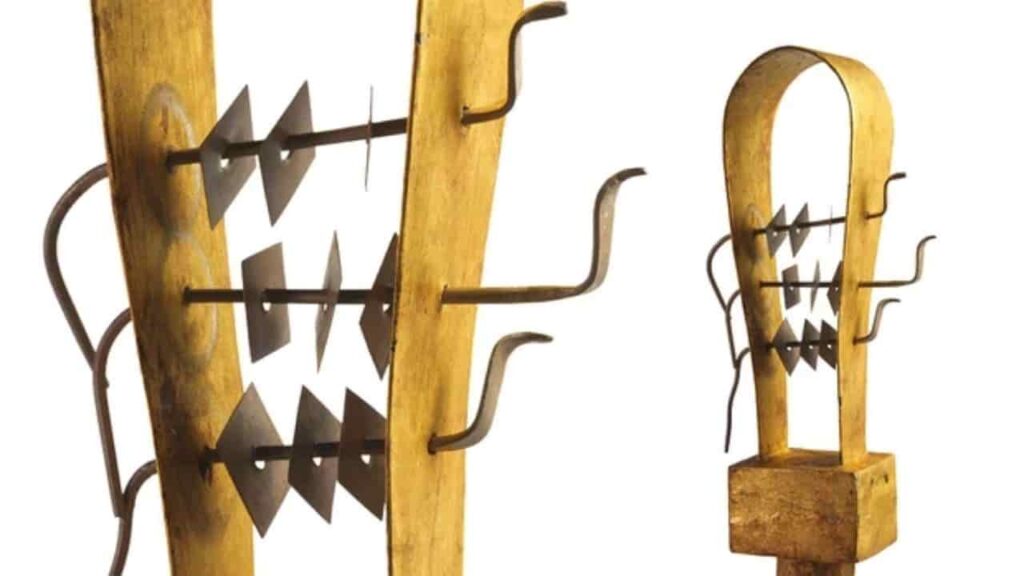
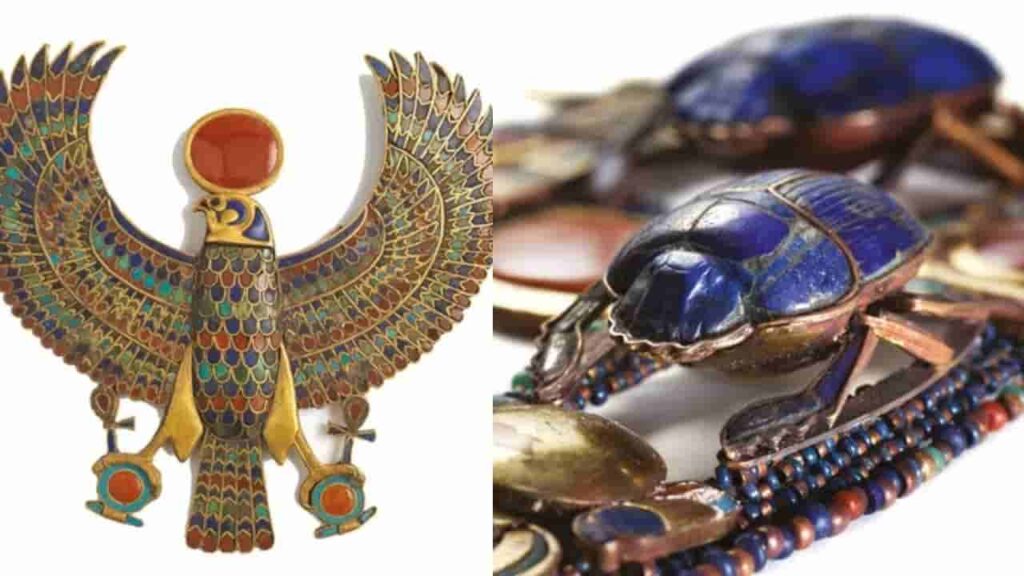
Read more: Photos of Lavish Pieces of ancient Egyptian jewelry

Read more: What does the scarab beetle symbolize in ancient Egypt? (amazing photos)
